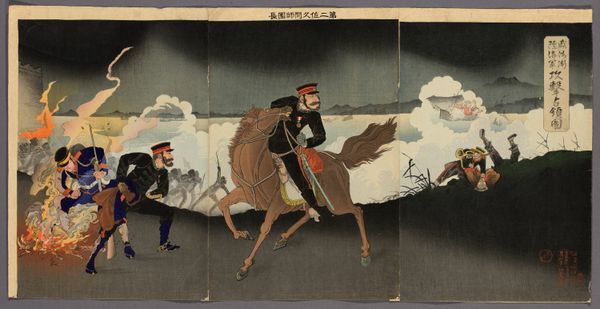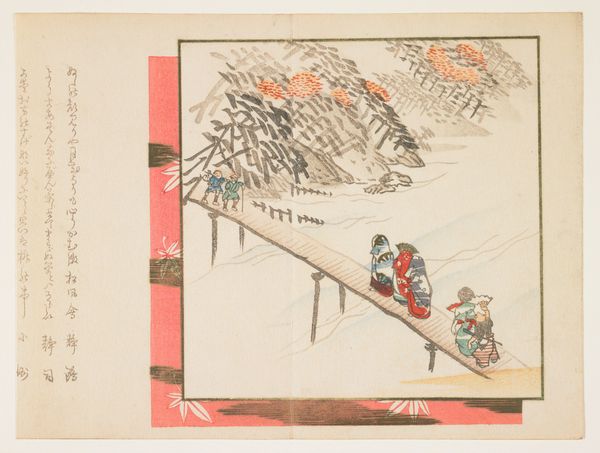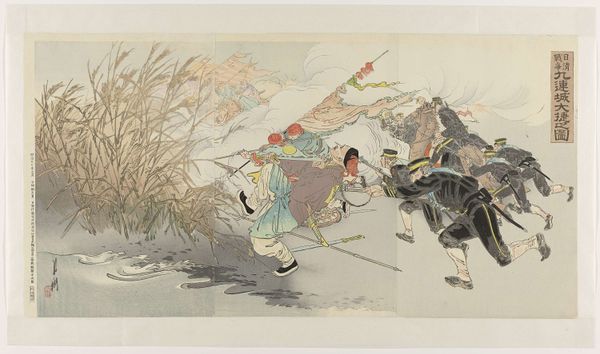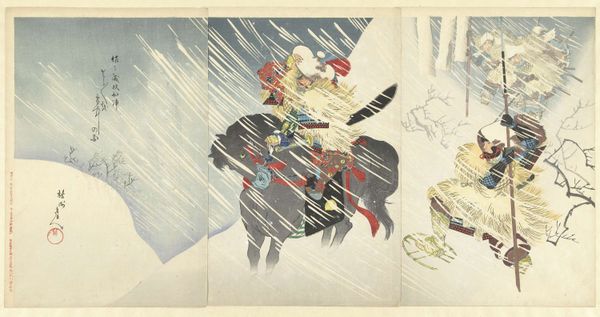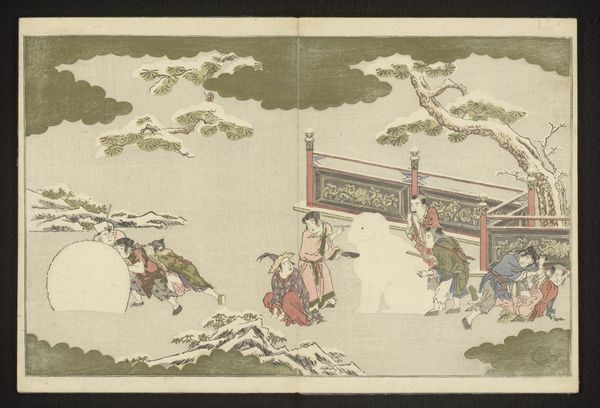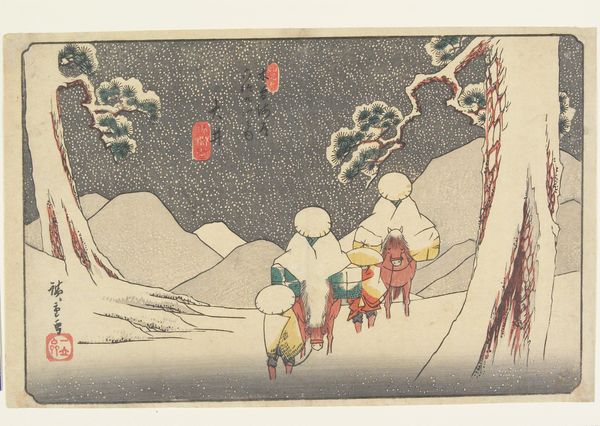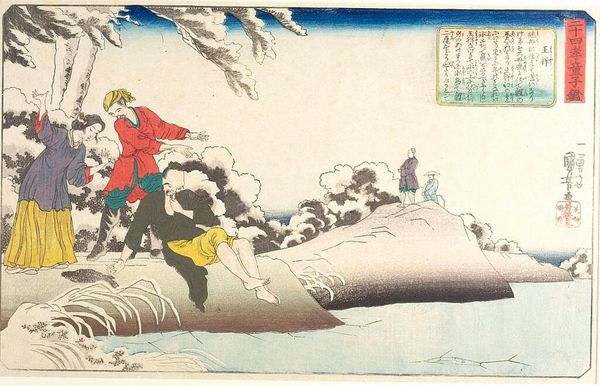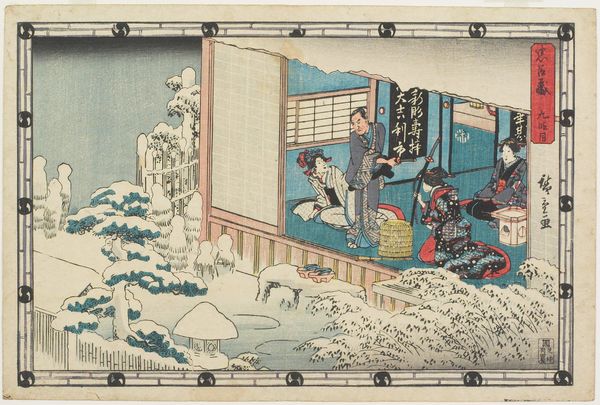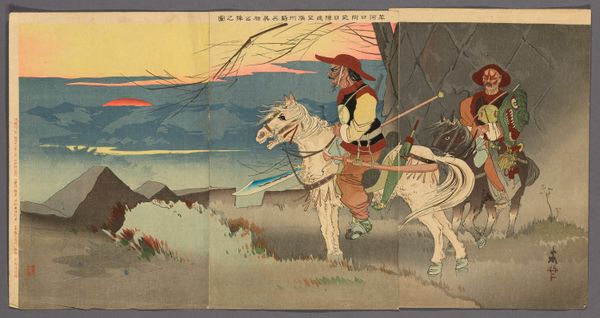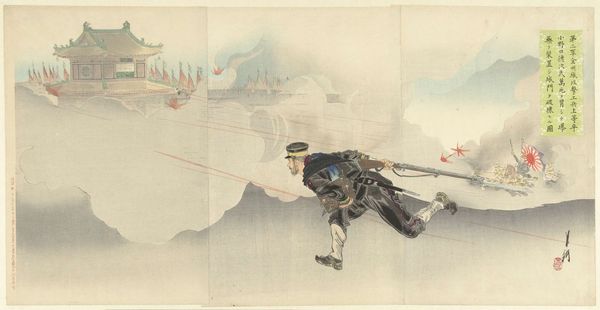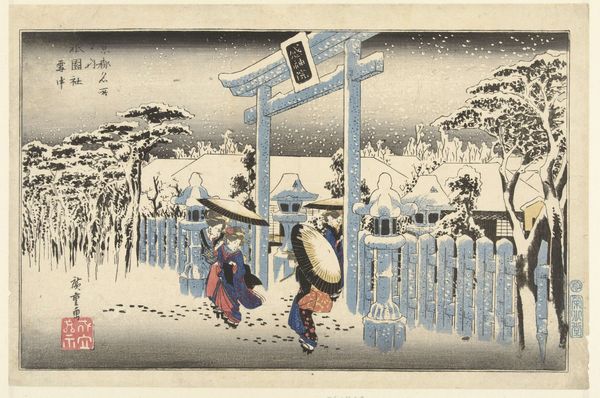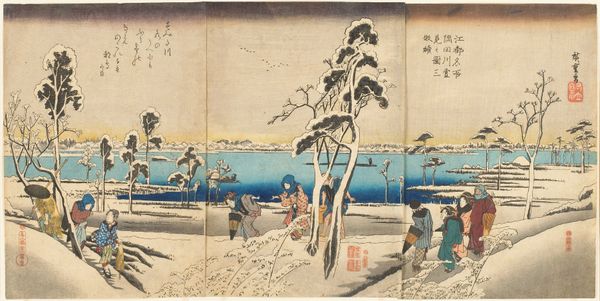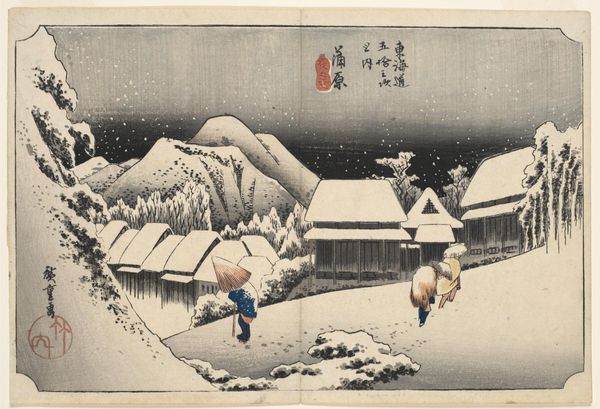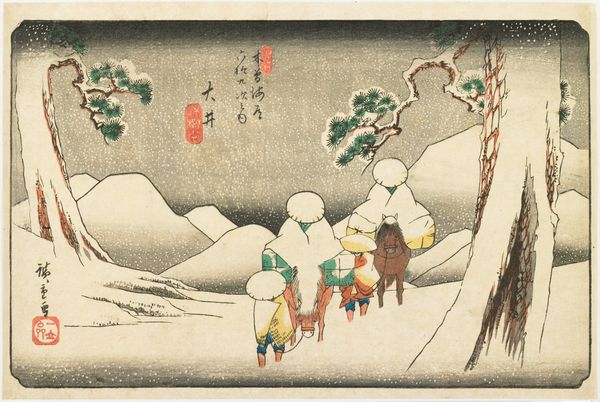
Our Officers Scouting the Enemy Camp in a Snow Storm (Oyuki o okashite waga shoko tanshin tekichi o teisatsu no zu) 1894 - 1895
0:00
0:00
Copyright: Public Domain
Curator: This print, currently residing at the Art Institute of Chicago, is called "Our Officers Scouting the Enemy Camp in a Snow Storm," made between 1894 and 1895 by Taguchi Beisaku. Editor: It looks brutally cold. The near monochrome palette with its overwhelming grays and whites, and the sheer volume of the snow falling really sells that feeling. You can practically feel the wind. Curator: Beyond the landscape's representation, the snowstorm itself carries symbolic weight. The obscurity it provides can represent the uncertainty of war, the hidden dangers, or even a sort of cleansing—a tabula rasa before battle. What stands out to me are the steadfast figures of the officers against the blizzard, representing courage, a classical attribute expected for men during the Meiji era, an important time of cultural change. Editor: I’m wondering about the production of these prints. They’re clearly made for mass distribution, serving perhaps as propaganda as part of the Sino-Japanese War at the time. You have to consider the sheer amount of labor that goes into something like this – carving the woodblocks, the layering of colors despite such a restricted palette, the paper it's printed on and where it was sourced... All of that affects its impact. Curator: That's an insightful reading! One could definitely see the layering not only as aesthetic, but also symbolic - of duties or hierarchy in military context for example. The print tradition itself—ukiyo-e—lends it a certain grounding in the everyday, making it more accessible and relatable to the public and giving power and representation to what and who is being depicted. Editor: Exactly, these weren't individual masterpieces meant for the elite, although clearly skilled labor went into their creation. Their impact relied, in part, on their accessibility and dissemination, tying into this patriotic fervor present at the time and allowing them to spread an easily digested political narrative. It definitely says a lot about art as labor during wartime! Curator: Considering this period in history allows us to comprehend the multiple layers present in seemingly simple visuals of snow, officers, and landscapes! It provides deeper knowledge about Japan at this time. Editor: Yes! Context is vital to truly unpacking this print, seeing the different values this simple print offers for a better historical and cultural comprehension.
Comments
No comments
Be the first to comment and join the conversation on the ultimate creative platform.
